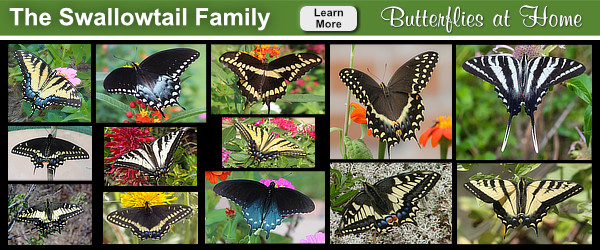Black Swallowtail
Characteristics
The Eastern Black Swallowtail (Papilio polyxenes) butterfly is a common visitor to open fields and farmlands, and frequently seen in urban landscapes. It can be seen from the Gulf of Mexico to southern Canada, from the Atlantic seaboard westward to Arizona, Southern California, Colorado, and North Dakota.
It features black wings with rows of yellow spots, separated by blue scaling.
It is similar to the Pipevine Swallowtail, Spicebush Swallowtail, and Palamedes Swallowtail but wing patterns are somewhat different. See our page that helps to identify common black-colored swallowtails.
The typical size is in the 2.5" - 4.0" range.
Identification of Male and Female Black Swallowtail Butterflies
A side-by-side comparison of the male and female Black Swallowtail is shown below. The male features a large row of yellow-colored spots across the middle of its wings. The female has smaller spots, but a larger area of blue scales on the lower wings.
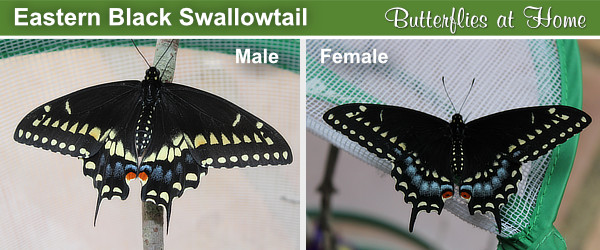

Nectar and Host Plants Used by the Black Swallowtail
Among the favorite nectar plants of the Black Swallowtail are milkweed, clover, thistles, others.
Its favorite host plants include dill, fennel, parsley, carrots, and celery.
Is It a Black Swallowtail, Monarch, or Queen Caterpillar?
The caterpillars of the Black Swallowtail, Monarch and Queen all feature white, yellow and black markings. But which one are you seeing? Check the images below for the differences between the three caterpillars.
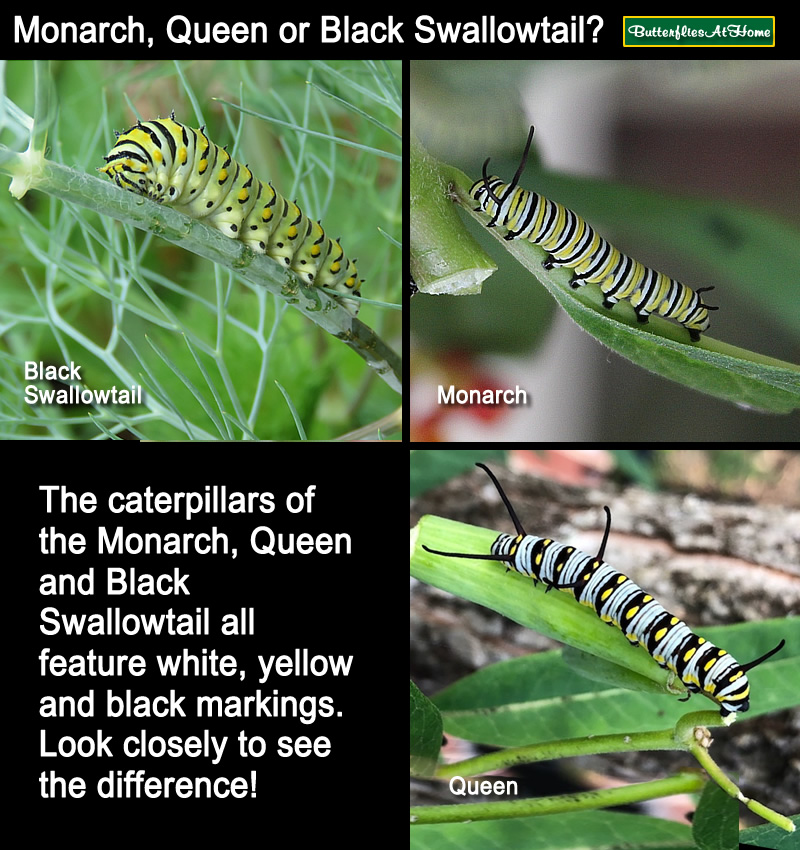

Black Swallowtail Life Cycle: Overview and Timings
| Stage | Typical Duration |
| Egg stage | Generally 4 to 10 days, depending on temperature and host plant |
| Caterpillar (larval) stage | 3 to 4 weeks |
| Chrysalis (pupal) stage | 10 to 20 days (except for overwintering pupae) |
| Adult butterfly stage | 6 to 14 days |
Black Swallowtail Life Cycle: The Eggs Are Laid
The female will lay up from 200-430 pale yellow eggs, at a rate of about 30-50 per day. The eggs will turn a dark gray just before hatching, which takes about 10-13 days.
Female Black Swallowtail butterfly laying eggs on dill
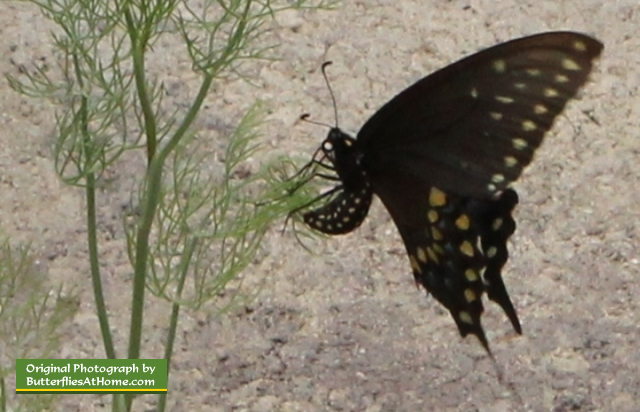
Black Swallowtail eggs on dill
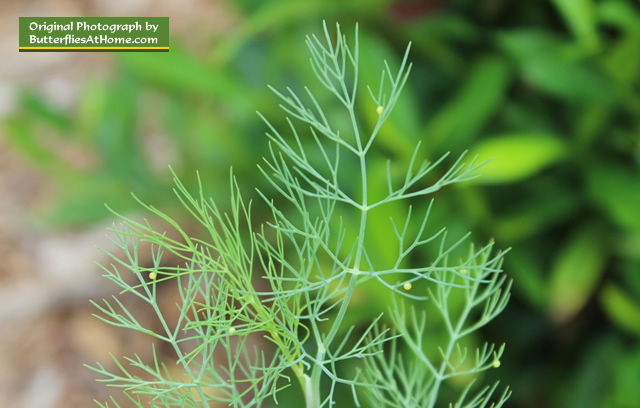
Black Swallowtail egg on bronze fennel
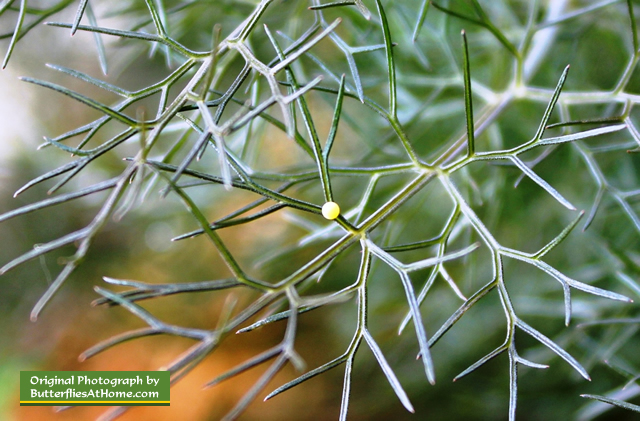
Black Swallowtail Life Cycle: From Eggs to Caterpillars
Young Black Swallowtail caterpillar with "saddle bag" markings
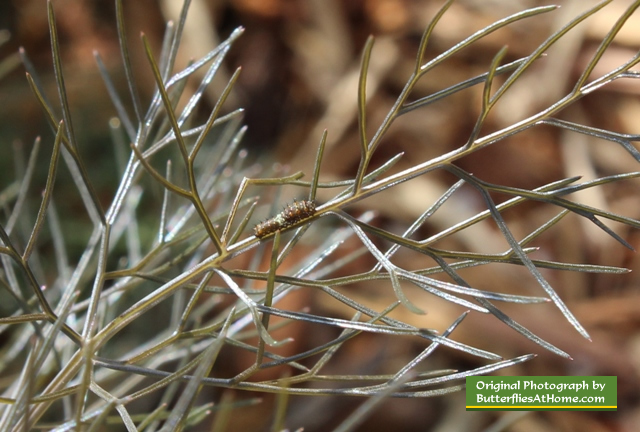
Mature Black Swallowtail Caterpillar showing its green coloration with black bands and yellow spots
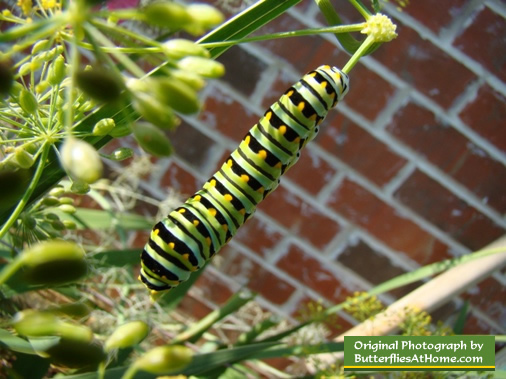
Five Black Swallowtail caterpillars feeding on Dill ... photography by a young butterfly enthusiast!
Black Swallowtail caterpillar ... the mostly black variety ... seen through the eyes and lens of a young nature lover
 |
Black Swallowtail Life Cycle: From Caterpillar to the Chrysalis
Black Swallowtail caterpillar preparing for the chrysalis ... doing the "J" position ...
an exciting moment for young, and older, butterfly watchers
Black Swallowtail caterpillar in its green chrysalis ... an exciting learning experience for young nature lovers
Brilliant green Black Swallowtail chrysalis
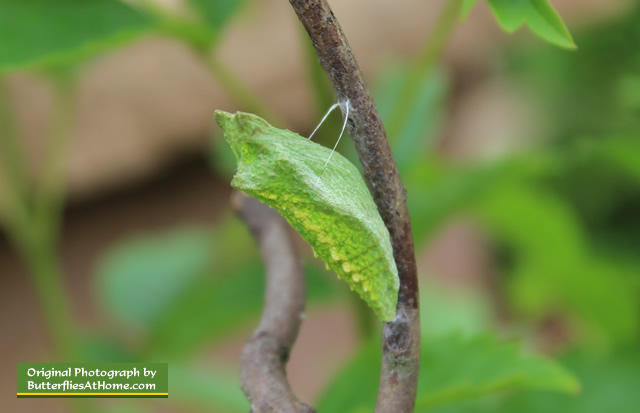
Black Swallowtail chrysalis ... hanging by a silk thread. The chrysalis will turn clear just before the butterfly is ready to hatch
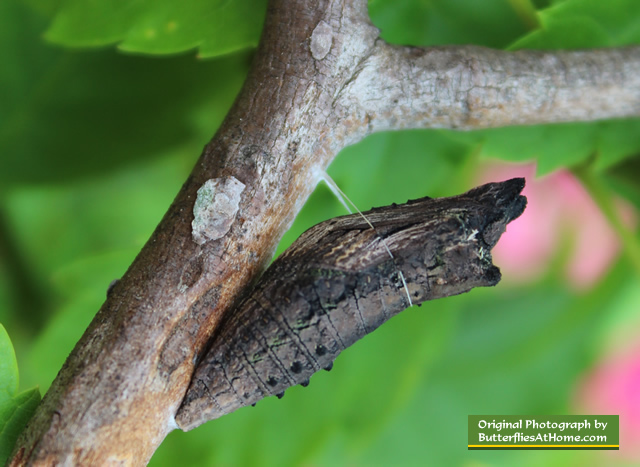
Empty chrysalis of a Black Swallowtail
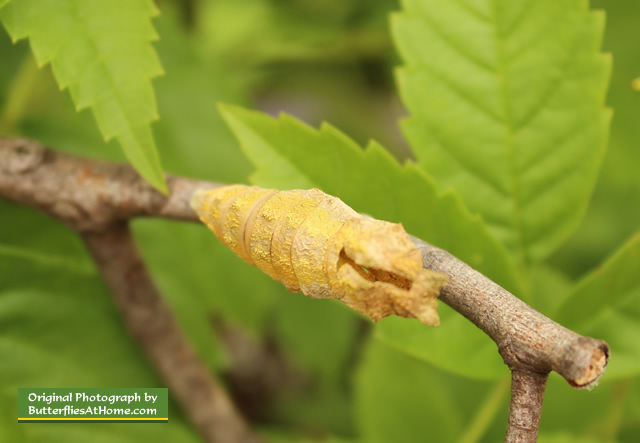
Black Swallowtail Life Cycle: From the Chrysalis to Adult
Black Swallowtail less than one hour old!
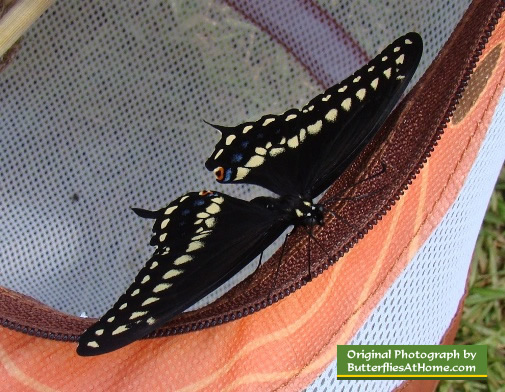
Black Swallowtail butterfly
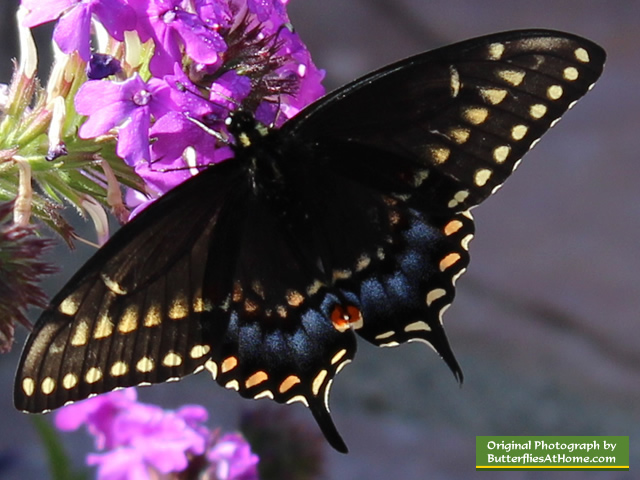
Black Swallowtail butterfly (ventral view) gathering nectar from a Milkweed flower
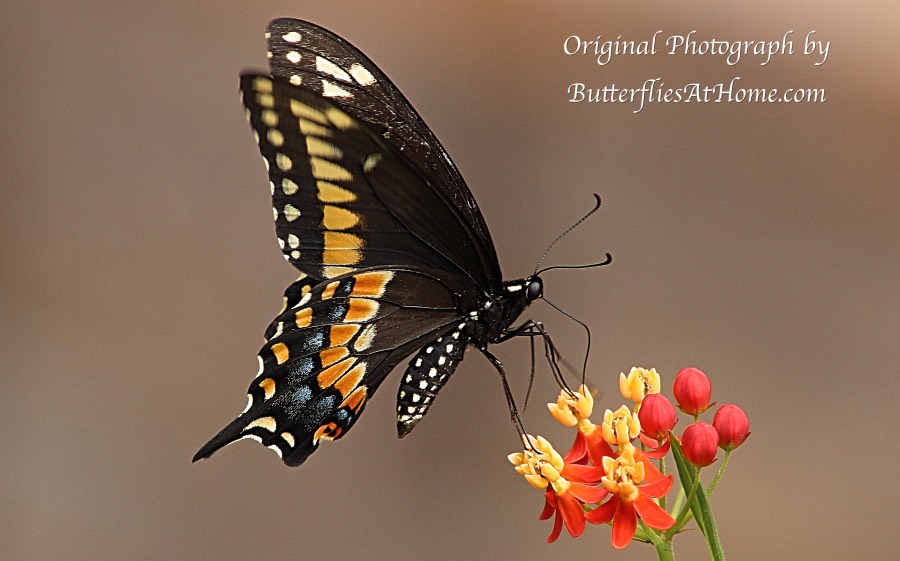
Overwintering Black Swallowtails
The Winter of 2013 was a long, cold season. We were glad to see the Spring of 2014 arrive, and to start seeing butterflies.
We were surprised in late March of 2014 with the emergence of three Black Swallowtail butterflies from the chrysalis they had been in since October of 2013.
In late September, 2013, we had gathered several caterpillars, and some of them hatched in the normal time frame. Others overwintered through temperatures as low as 15 degrees.
All are now free enjoying the mild spring!
The first Black Swallowtail butterfly to eclose from its chrysalis, on March 27, 2014, after overwintering
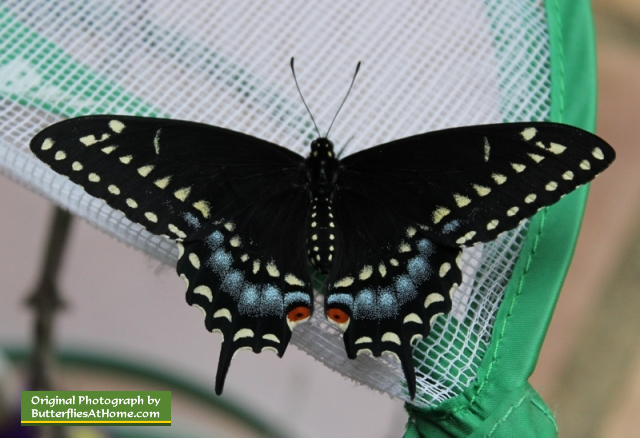
The second Black Swallowtail butterfly to eclose from its chrysalis, on April 1, 2014, after overwintering
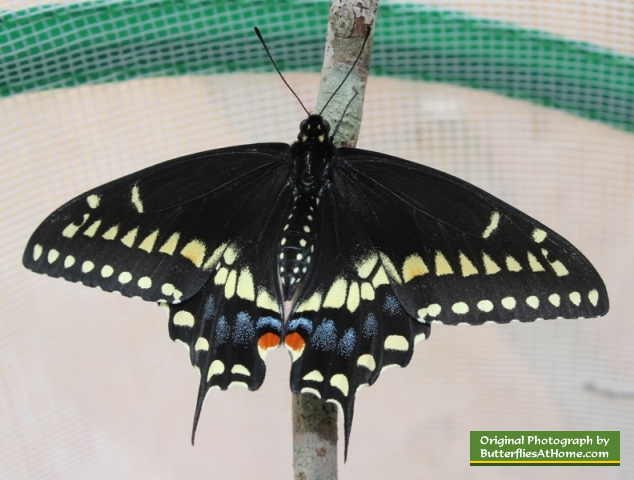 |
The third Black Swallowtail butterfly to emerge from its chrysalis, on April 4, 2014, after overwintering
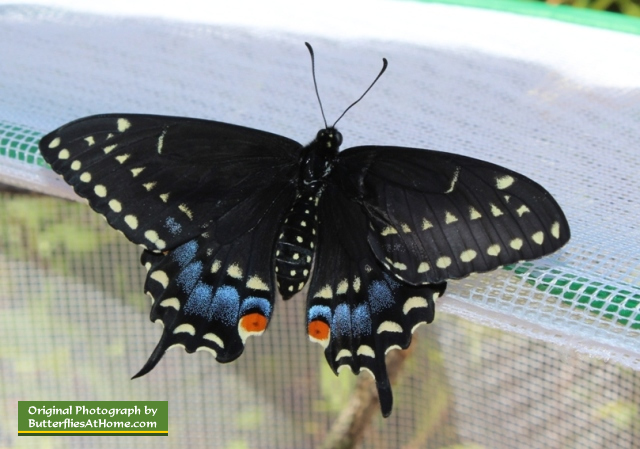
The third Black Swallowtail butterfly to emerge from its chrysalis, on April 4, 2014 ... the weather was cool and windy, and it was reluctant to fly

The third Black Swallowtail butterfly to emerge from its chrysalis, on April 4, 2014 ... it finally was able to fly, and experience the beautiful spring weather!
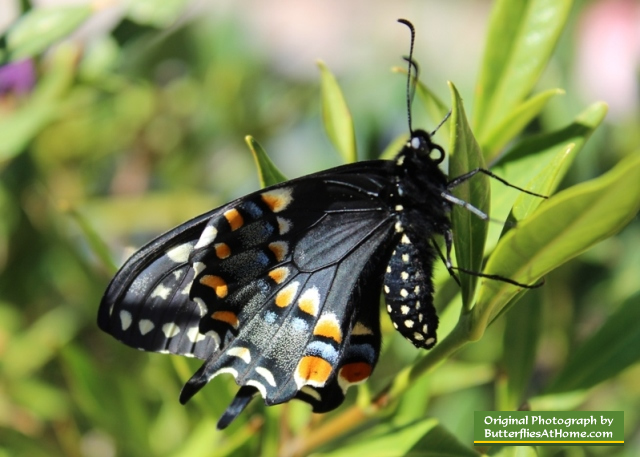
 |
|||
Check out these popular butterfly items at our Amazon Store |
|||
| Kaufman Field Guide to Butterflies of North America 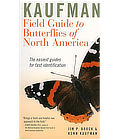 |
The Life Cycles of Butterflies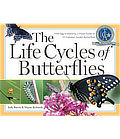 |
Peterson First Guide to Butterflies and Moths of North America 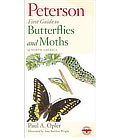 |
|
Outdoor Butterfly Hanging Flag |
Butterfly Habitat Cage |
Butterfly Sterling Silver Pendant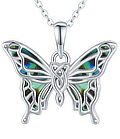 |
|
|
|||

